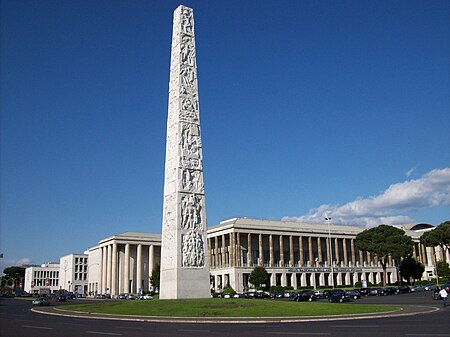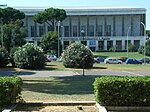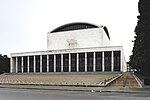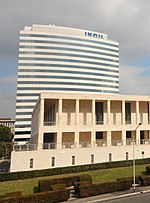EUR, Rome

EUR is a residential and business district in Rome, Italy, part of the Municipio IX. The area was originally chosen in the 1930s as the site for the 1942 World's Fair which Benito Mussolini planned to open to celebrate twenty years of Fascism, the letters EUR standing for Esposizione Universale Roma ("Universal Exposition Rome"). The project was originally called E42 after the year in which the exhibition was to be held. EUR was also designed to direct the expansion of the city towards the south-west and the sea, and to be a new city centre for Rome. The planned exhibition never took place due to World War II. Most of the area is the property of EUR S.p.A., a company jointly owned by the Ministry of Economy and the Municipality of Rome.
Excerpt from the Wikipedia article EUR, Rome (License: CC BY-SA 3.0, Authors, Images).EUR, Rome
Piazza Guglielmo Marconi, Rome Europa
Geographical coordinates (GPS) Address Nearby Places Show on map
Geographical coordinates (GPS)
| Latitude | Longitude |
|---|---|
| N 41.833611111111 ° | E 12.470833333333 ° |
Address
Obelisco Marconi
Piazza Guglielmo Marconi
00144 Rome, Europa
Lazio, Italy
Open on Google Maps











